Last updated on November 17, 2022
Google Search Console is a free tool that allows you to monitor your site’s performance in Google search results. But did you know that it is one of the most underrated keyword research tools in SEO?
Me neither. Until one of my colleagues pointed it out to me and I never looked back ever since. In fact, using Google Search Console for keyword research has been the single biggest tactic for me to drive millions in traffic for mine and my client’s websites. In today’s article, I’ll cover:
- When does it make sense to use Google Search Console for keyword research?
- Why Google Search Console is the best place to do keyword research?
- How to use Google Search Console for keyword research?
- Are there any tools to complement your keyword research in Google Search Console?
I’ll share some of the best ways you can use Google Search Console to find navigational, informational, investigational and transactional keyword opportunities that are easy to rank for.
When does it make sense to use Google Search Console for keyword research?
Google Search Console is generally helpful if you have some articles that are ranking for your desired keywords.
The thumb rule is if you’re a brand new blog with <10 articles and <100 overall impressions, then it doesn’t make sense to use Google Search Console for keyword research. I suggest you to bookmark this article for later when you start getting some traffic and cross this threshold.
However, if you’re an established blog with 10+ articles and >100 overall impressions, you should continue reading on. If you aren’t using Google Search Console to do keyword research, you’re missing a fantastic opportunity to drive lots of traffic quickly.
Why Google Search Console is the best place to do keyword research?
Google Search Console gives you a look at how Google sees your site. No other tool out there can do this, and it’s 100% free!
When you create an article that targets a keyword on Google, the search engine will also rank your site for topically or semantically related keywords—usually an indication that it’s starting to consider your website to be an authoritative resource on the topic.
For some keywords, the existing article might still be the best option to rank. But for other keywords, you might have to create new articles to serve their intent.
For example, you created an article for “best AI copywriting software“. While you might be ranking for it, you will notice that Google will also try to rank you for semantically related keywords like “ai writing software”, “will AI replace writers” and “writesonic alternative“. With the former, your existing article will work. But with the latter two keywords, you will have to create new articles to serve the respective keyword’s intent.
Here’s a secret: it’s a LOT easier to rank on Google for a keyword that Google is already trying to rank you for vs a brand new keyword. If you create a new article to target that keyword, you’ll likely reach page 1-3 in <3 months for that keyword. While for a new keyword, it can take MUCH longer.
That’s why I feel keyword research using Google Search Console is the lowest hanging fruit for SEO teams. The world’s best SEO teams guide their content strategy based on how Google directs them in Search Console.
5 Ways To Use Google Search Console For Keyword Research
Over 10 years, I’ve driven millions in search traffic and revenue for many SaaS companies. I’m going to share 5 tricks that I use in Google Search Console that were largely responsible in driving such results.
Remember these tricks are depending on the type of content already published on your site. So some might work for you, some might not!
If you’d prefer watching it as a live walkthrough in Google Search Console, here’s my video:
For those of you who prefer reading, let’s dive in!
Find commercial brand keyword opportunities
Commercial brand keywords are usually the most bottom of the funnel opportunities where the searcher is well aware of the solutions and is looking specifically for a product to buy.
Step 1: Go to Performance > Click on “New” > Select “Query”

Step 2: In the queries containing section, you can add keywords like:
- software
- vs
- or
- review
- tool
- alternative
- competitor
- extension
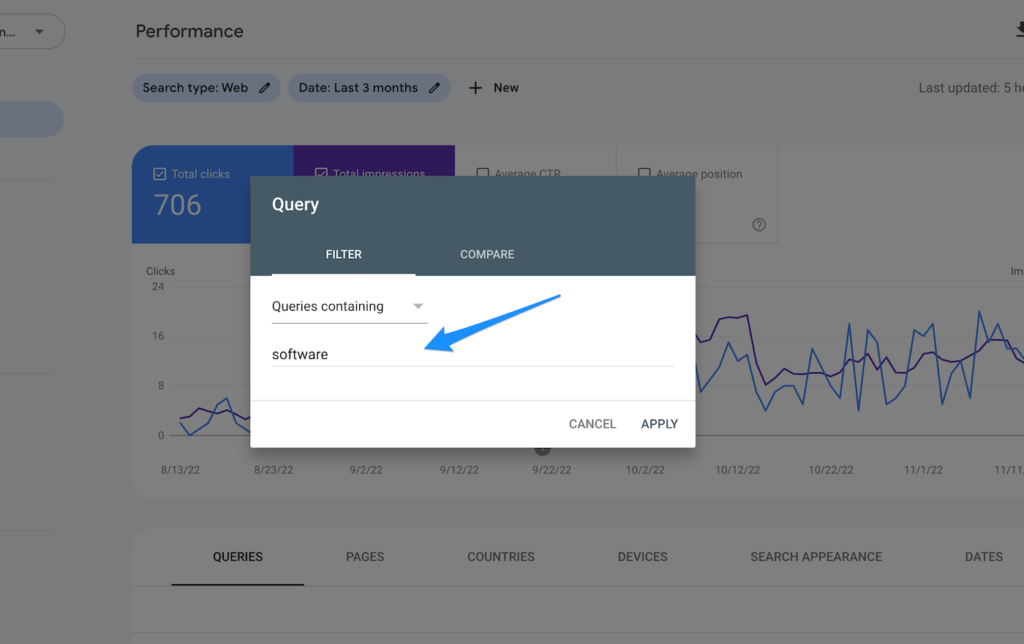
You can also do a reverse trick. Filter all the queries not containing any commercial brand keyword and find more top and middle of the funnel keyword opportunities.
Find questions keyword opportunities
Filter your queries with question keywords to find questions keyword opportunities in Google Search Console.
- how
- what
- why
- where
- when

This is a powerful way to uncover questions keywords that you’re not answering for.
Sort keywords by number of impressions, but zero clicks
When you sort keywords by number of impressions and 0 clicks, you’ll find keywords where your site is being shown aggressively by Google, but it’s not getting any clicks. Perhaps it’s time to create a new piece of content for it. It’s a good way to find prioritized keyword opportunities.
There is another filter option right beneath the graph in Search Console.
Step 1: Click on “Filter Rows” > Select “Clicks”
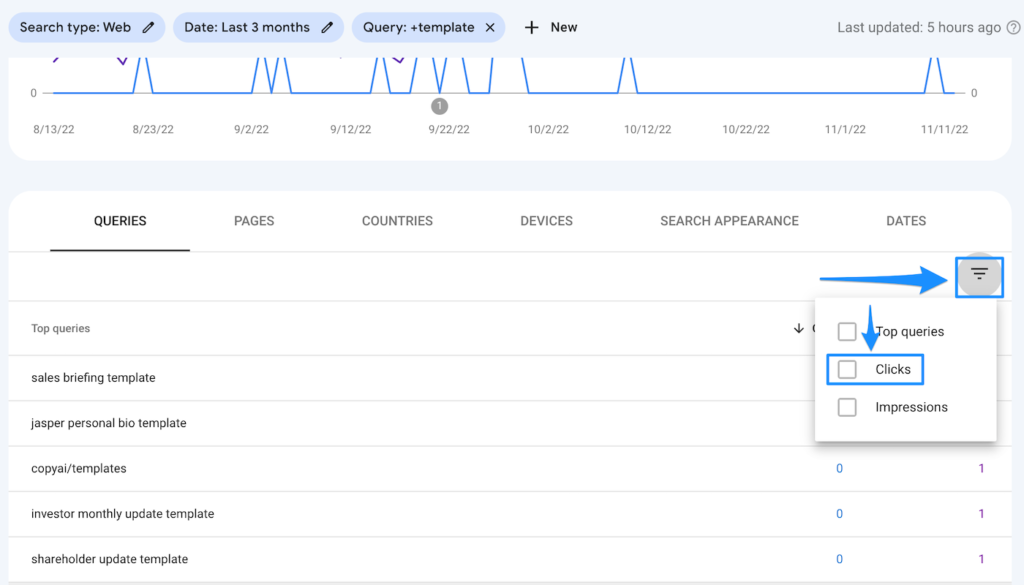
Step 2: In Filter by Clicks, select “Smaller than” > Input value 1 > Click on Done
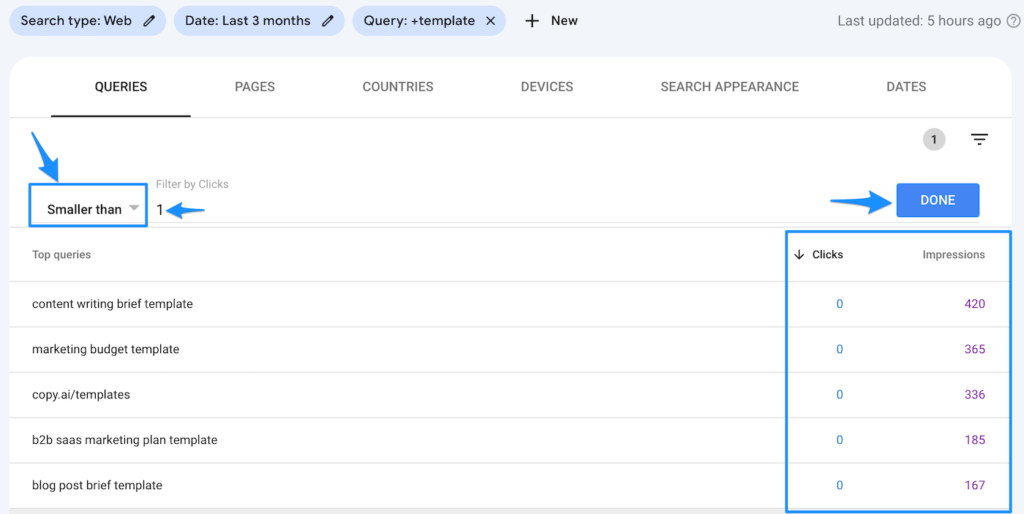
You’ll find all the keyword opportunities with the highest impressions but 0 clicks. Use it creatively. 🙂
Find keyword opportunities where your impressions are growing month over month
This is a great way to identify growing topics that Google is trying to rank you for where you can possibly create a new piece of content.
Step 1: Click on Date

Step 2: Click on Compare > Select the time period (you can even select custom time period)
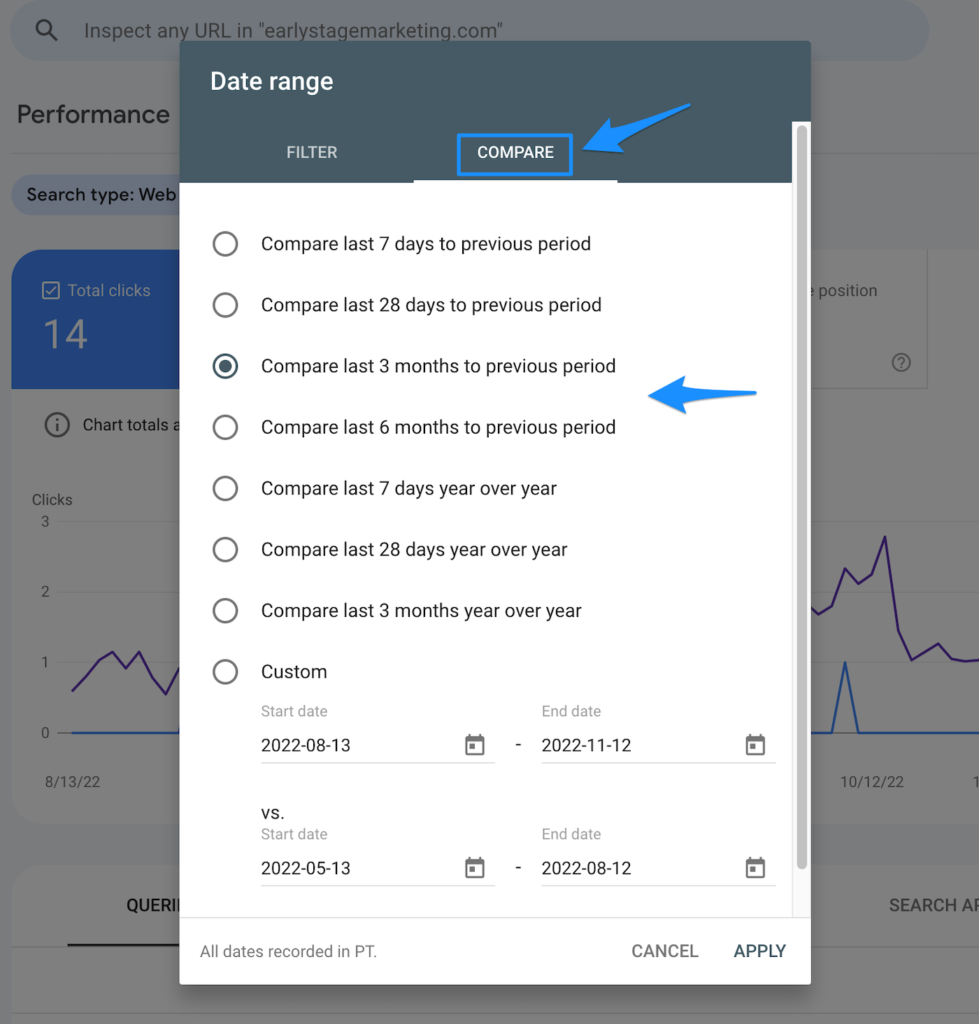
Step 3: Click on Filter Rows > Select Clicks Difference or Impressions Difference > Add a value > Click Done
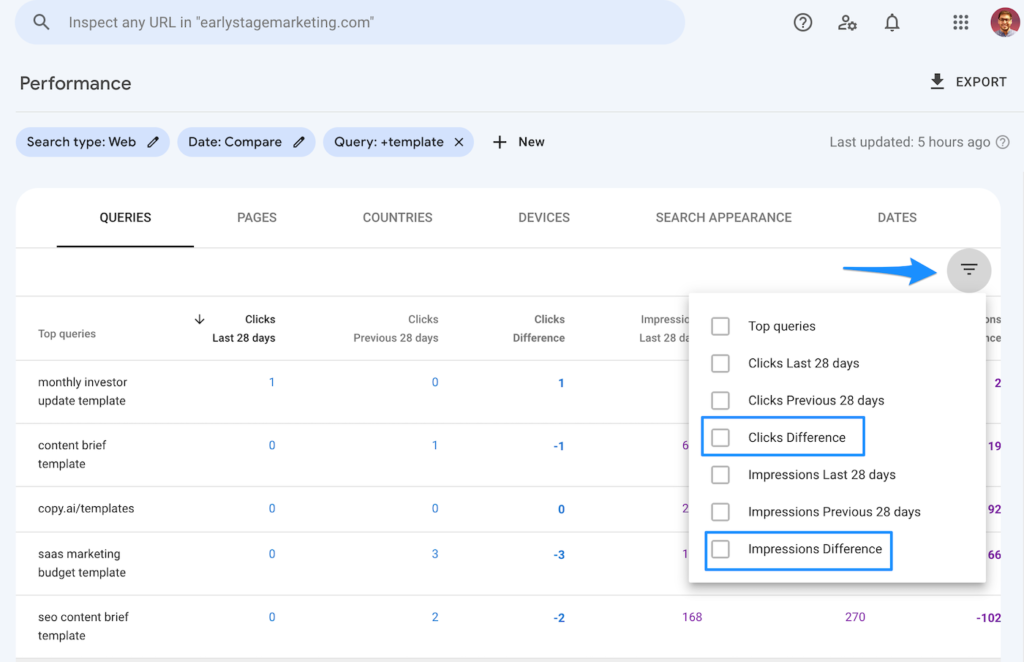
Find your best performing topics that Google is pushing your site hard for
Find your best performing pages in Search Console and then find the keywords it ranks for. Find any keyword in those opportunities that can be best served with a new piece of content.
Step: Click on Pages > Click on the article > Click on Queries again

You’ll find all keywords that your best performing article is ranking for.
Other tricks
This is barely scratching the surface. You can experiment in Google Search Console with:
- Click-through rate (CTR) filters
- Average keyword position filters (not very useful IMO)
- Geographic locations filters to find keywords that are specifically popular in a particular country
- Device filters to find keywords that are more focused towards mobile visitors etc.
- Search appearance (review, videos, product results, web light results etc.)
Be creative and use Google Search Console to it’s full advantage based on YOUR business needs.
Is Google Search Console enough to do your keyword research?
No, atleast not for me.
The issue with Google Search Console is that it will show you keywords that you’re ranking for and the impressions it’s getting. But it’s difficult to know the opportunity size of that keyword. Sometimes Google ranks you for keywords that have almost 0 opportunity size.
So you’ll end up wasting your time by spending 10 hours creating an article for a keyword that might be getting only 1-2 visitors per month.
That’s why I recommend using a keyword research tool alongside Google Search Console to prioritise which keywords to go after.
One of the best keyword research tools out there is SEMrush. It pairs well in your keyword research process by giving you a view of the market opportunity for this keyword.
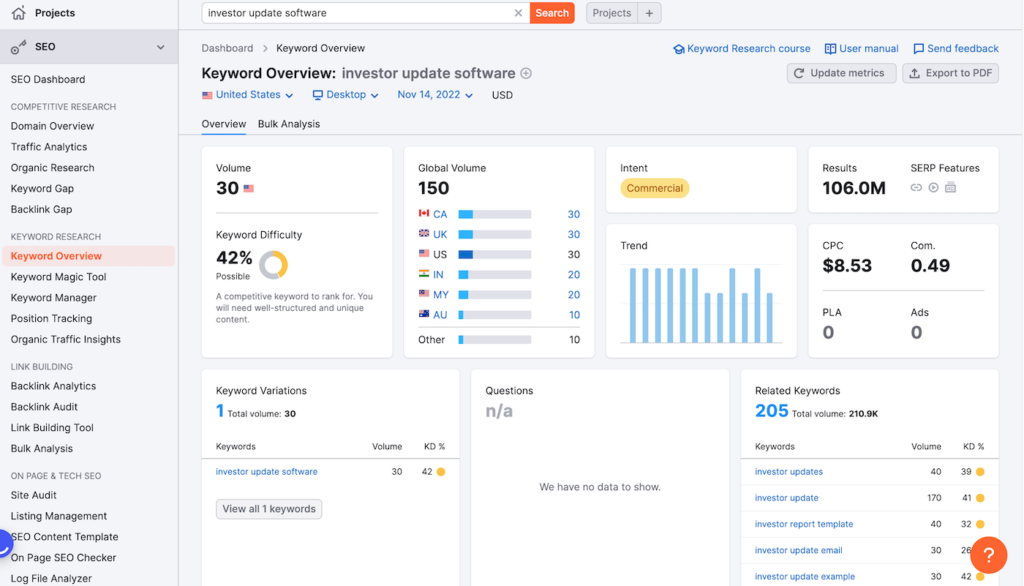
Are there any good tools that pair well with this keyword research process?
Yes, there are.
Here’s how I use my tools to implement all these keyword suggestions from Google Search Console:
- Use Google Search Console for keyword discovery.
- Use SEMrush for keyword prioritisation.
- Use CopyAI to help with writing the content in 1/10th the time.
- Use Surfer SEO to optimise content so it’s better than it’s competitors in search.
That’s my little workflow to implement these keyword opportunities and create content at scale that ranks quickly.
Now, go find that low hanging keyword opportunity.
